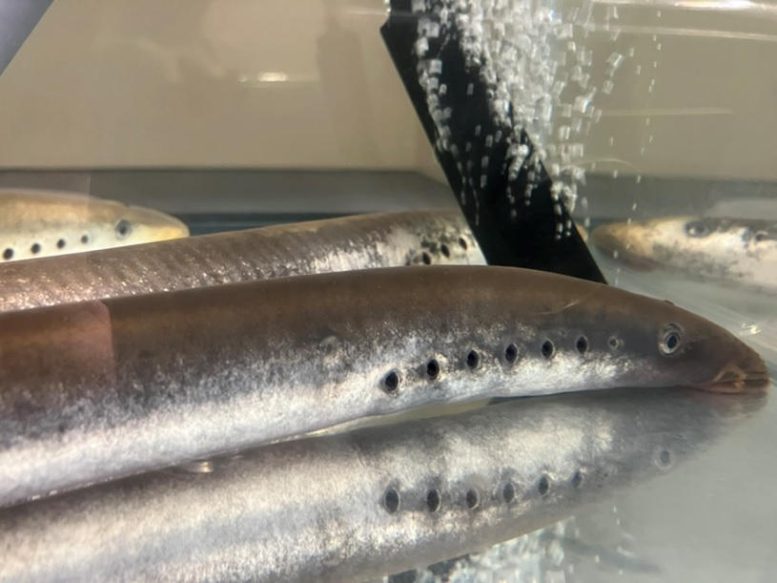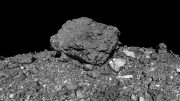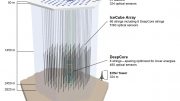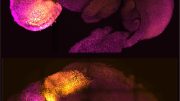
New research reveals that the vertebrate head mesoderm evolved from a distinct ancient mesoderm, challenging traditional views on the evolution of the vertebrate skull. Advanced microscopy techniques showed that the head mesoderm in lamprey embryos is fundamentally different from somites, indicating an early divergence in vertebrate evolution.
Scientists are examining the development of lamprey embryos to shed light on the origin of the vertebrate head, which could enhance our understanding of ancestral vertebrates.
The origins of the vertebrate skull remain a subject of much debate amongst evolutionary biologists. There are those who argue that the development of the vertebrate head can be attributed to alterations in the segmented parts of the body, like the vertebrae and somites. In contrast, some scientists hold the view that the vertebrate head emerged as a distinct, non-segmented body part, not connected to the commonly seen embryonic segments known as somites.
Interestingly, previous studies on embryos have revealed the presence of some vestiges of somites in the head mesoderm (e.g., head cavities and somitomeres). However, homology between trunk somites and such head segments has been controversial.
The failure to understand the evolutionary origins of the vertebrate head is also attributable to the lack of studies on extant species such as lampreys, which are known to share several traits with fossil jawless vertebrates and retain primitive traits related to the head mesoderm. While some studies have focused on the embryonic morphology of lampreys, they have often fallen short because of challenges like tissue destruction and acidic fixation during examination, making it difficult to observe the formation of head mesoderm and trunk somites.
Recent Advances in Research
Now, however, a research team led by Assistant Professor Takayuki Onai from the University of Fukui, Japan, has utilized advanced techniques like transmission electron microscopy and serial block-face scanning electron microscopy (SBF-SEM) to understand the development of the head mesoderm and somites in lamprey embryos. The researchers also analyzed the morphology and gene expression patterns of cephalochordate and hemichordate (both being invertebrates) to understand the origins of somites and head mesoderm from an evolutionary perspective.

These primitive jawless fish could hold clues to the evolutionary origin of vertebrate heads, as evidenced by detailed embryological analyses. Credit: Takayuki Onai from University of Fukui
This paper was recently published in the journal iScience, and is co-authored by Dr. Noritaka Adachi from Aix-Marseille Université, Dr. Hidetoshi Urakubo from the National Institute for Physiological Sciences (NIPS), Dr. Fumiaki Sugahara from Hyogo Medical University, Dr. Toshihiro Aramaki from Osaka University, Dr. Mami Matsumoto from NIPS and Nagoya City University, and Dr. Nobuhiko Ohno from NIPS and Jichi Medical University.
To clarify the presence or absence of somites in the head mesoderm during the early stages of diversification, the researchers focused on rosettes, which are major somite patterns and are important for the subsequent development of vertebrae. Their initial observations of lamprey embryos showed that the tissue closely related to the formation of facial muscles and other elements of the skull, known as the head mesoderm, did have cell clusters with features similar to somite rosettes.
To clarify if these cell clusters were indeed rosettes, they conducted ultrastructural experiments, including the SBF-SEM and gene expression analysis. This examination of the cellular morphology and gene expression revealed that the cell clusters were clearly distinct from rosettes. “The cell clusters we observed are likely lamprey-specific features, as they are not recognizable in the head mesoderm of both hagfish and shark embryos,” explains Dr. Onai.
Gene Expression and Evolutionary Findings
Furthermore, gene expression analysis also revealed the absence of segmental expression of somitogenesis-related genes, indicating their distinctiveness from somites. These findings indicate that the rosette pattern typically seen in somites is not necessarily the essential or most basic feature that defines the process of bodily segmentation.
Moreover, the experiments provide evidence that the vertebrate head mesoderm diverged during the early phases of vertebrate evolution. Furthermore, a comparison of embryos of hemichordates (a basal deuterostome), amphioxus (a basal chordate), and vertebrates revealed that the somites likely arose from the “endomesoderm” tissue of an ancient deuterostome ancestor. The evolutionary origin of somites has been the central question in zoology for more than 150 years, and in this study, Onai et al., revealed the enigma. Regarding the evolutionary mechanism for the emergence of head mesoderm, they found that the head mesoderm emerged upon the segregation of mesodermal genes between the front and back parts (rostro-caudal axis) of organisms.
“Taken together, our findings revealed a different evolutionary origin for the vertebrate head mesoderm, suggesting that it evolved from the repatterning of an ancient mesoderm and diversified even before the emergence of jawed vertebrates,” concludes Dr. Onai.
In summary, the finding that the cell clusters present in the head mesoderm are distinct morphologically and molecularly from somites, favors a new model where the vertebrate head mesoderm diverged during early evolution. This sheds more light on the age-old debate on the evolution of the vertebrate head and can help us advance the understanding of our own origins.
Reference: “Ultrastructure of the lamprey head mesoderm reveals evolution of the vertebrate head” by Takayuki Onai, Noritaka Adachi, Hidetoshi Urakubo, Fumiaki Sugahara, Toshihiro Aramaki, Mami Matsumoto and Nobuhiko Ohno, 13 November 2023, iScience.
DOI: 10.1016/j.isci.2023.108338









Nonsense. Complete nonsense. 19th-century junk pseudo-science. This is an article about nothing.